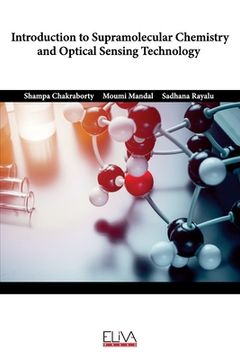Share
Introduction to Supramolecular Chemistry and Optical Sensing Technology
Moumi Mandal
(Author)
·
Sadhana Rayalu
(Author)
·
Shampa Chakraborty
(Author)
·
Eliva Press
· Paperback
Introduction to Supramolecular Chemistry and Optical Sensing Technology - Mandal, Moumi ; Rayalu, Sadhana ; Chakraborty, Shampa
Choose the list to add your product or create one New List
✓ Product added successfully to the Wishlist.
Go to My Wishlists
Origin: U.S.A.
(Import costs included in the price)
It will be shipped from our warehouse between
Friday, August 09 and
Friday, August 16.
You will receive it anywhere in United Kingdom between 1 and 3 business days after shipment.
Synopsis "Introduction to Supramolecular Chemistry and Optical Sensing Technology"
Supramolecular Chemistry is one of the most fashionable and budding areas of chemistry. Supramolecular chemistry studied the area of protein folding, host-guest chemistry, interlocked molecular architectures, and dynamic non-covalent chemistry. Supramolecular Chemistry or Molecular recognition deals with the detection of ionic or neutral guests by specific interactions with the host molecule. One of the most useful application for supramolecular chemistry is chemical sensing. Selective chemical sensors are very useful for the monitoring of lot of samples and the methods are convenient and cheap, easily operable and require no pre-treatment. An ion sensor should be selective for a particular host material but has poor sensitivity to others. The sensing technology is one of the main detection tools for modern chemistry as this will give prompt and accurate results without any pretreatment. The beginning of supramolecular chemistry has been considered since 1987 when Charles Pederson won the Nobel prize for synthesizing cyclic polyethylene glycol (1967) (crown ether) - a metal ion scavengers. Over the five decades, Supramolecular Chemistry evolutes and creates its applications in many newer branches. As a result, again in 2016, the Nobel Prize for chemistry comes in the same field introducing molecular machines by Jean-Pierre Sauvage, Sir. J. Fraser Stoddart and Bernard L. Feringa. Because of its interdisciplinary nature, Supramolecular Chemistry is now prevalent in many scientific areas such as chemistry, physics, materials and biological sciences.
- 0% (0)
- 0% (0)
- 0% (0)
- 0% (0)
- 0% (0)
All books in our catalog are Original.
The book is written in English.
The binding of this edition is Paperback.
✓ Producto agregado correctamente al carro, Ir a Pagar.

